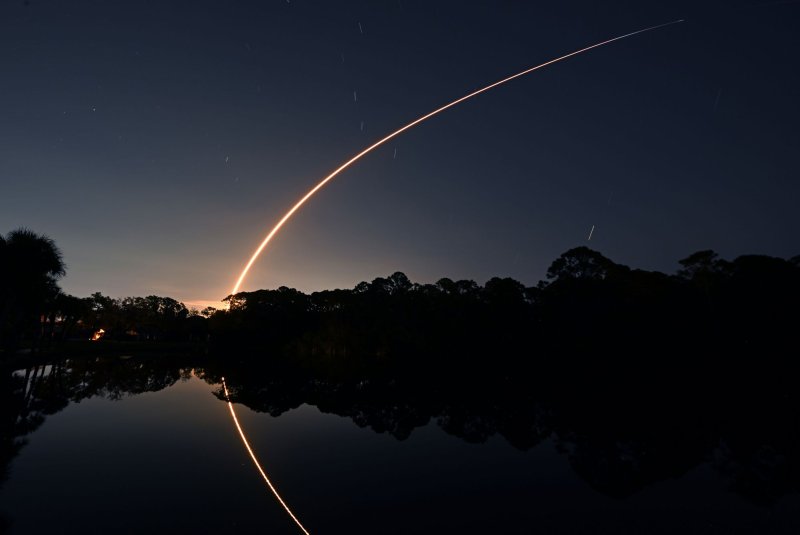Timed exposure of the SpaceX Falcon 9 rocket as it launches from Launch Complex 40 at the Cape Canaveral Space Force Station, Florida on Feb. 26. It carried the Intuitive Machines (IM-2) lander Athena into space. Athena then traveled to the moon but missed its targeted landing mark Thursday by hundreds of feet and instead touched down into a crater where it is unable to charge its batteries. Photo by Joe Marino/UPI |
License PhotoMarch 7 (UPI) — The Athena lunar lander touched down on the moon’s surface Thursday, but not where intended, and is no longer in operation.
IM announced in a press release Friday that Athena landed around 800 feet from its targeted mark inside a crater and on its side. Mission controllers responded by moving forward with some of Athena’s planned tasks, but due to its darkened location the lander could not recharge its batteries.
Athena was to land on the lunar Mons Mouton Mountain at the lunar south pole, with a main purpose of exploring for water ice, which if present, would allow future astronauts to create fuel, water and air without the need for such materials to be shipped separately.
Due to Athena’s whereabouts, IM does not expect the lander to be able to ever charge, and the mission has been ended, with any data it managed to gather still under assessment.
IM has since stated that the Athena landing is the southernmost lunar landing and surface operations ever achieved, and during a Thursday press conference before Friday’s confirmation of Athena’s fate, Intuitive Machines CEO Steve Altemus said that “Any time you ship a spacecraft to Florida for flight, and end up a week later operating on the moon, I declare that a success,” but then added that he didn’t believe Athena was oriented correctly.
The spacecraft, constructed by the private Texas-based Intuitive Machines company, is the second such device to land on the moon this week. The Blue Ghost lander, developed by Firefly Aerospace, also based in Texas, successfully arrived Sunday in the Mare Crisium basin region, with a mission to conduct experiments provided by NASA.
